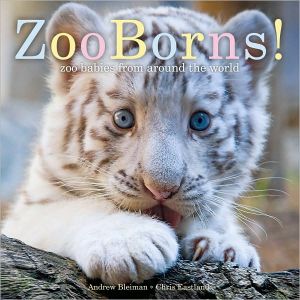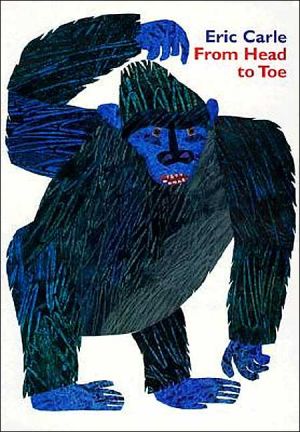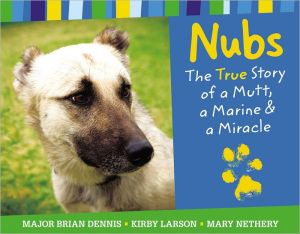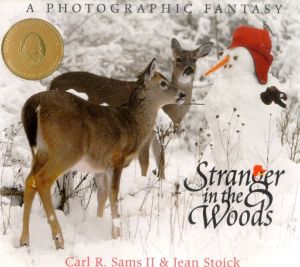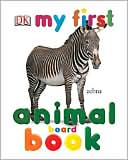ZooBorns!: Zoo Babies from Around the World
A Classic Board Book edition of the bestselling and irresistible ZooBorns!\ Pulled from the pages of the wildly popular ZooBorns blog, this board book presents the most charming critters ever: baby animals, ranging from the adorable to the zany! Featuring full-color photographs on every page and a cozy text perfect for reading aloud, this book is sure to become a must-have for animal lovers of all ages, especially perfect for small hands.
Search in google:
Pulled from the pages of the wildly popular ZooBorns blog, this picture book presents the most charming critters ever: baby animals, ranging from the adorable to the zany! Featuring full-color photographs on every page and a cozy text perfect for reading aloud, this book is bound to become a must-have for animal lovers of all ages.Publishers WeeklyAgonizingly adorable photographs of newborn animals steal the spotlight in this introduction to a baby fox, hyena, tiger, mongoose, and more. The closeup, full-bleed images appear opposite brief, exuberant prose written from each animal's perspective ("They call me Rooby, and I'm a kangaroo. What's a gal to do when her fur hasn't grown in yet?"). For those seeking greater detail, an appendix includes the animals' conservation status, information about their traits and habits, and the zoos and parks where they make their homes. Ages 2-up. (Oct.)
Name: Miracle Kitten\ Species: Ocelot\ Home: Connecticut’s Beardsley Zoo\ D.O.B.: 10/31/2008\ Status: Least Concern\ Sometimes nature needs a little help, and this feisty Miracle Kitten is the result. Only the third ocelot in history to be born through artificial insemination, Miracle Kitten was specifically conceived to bolster this rare species. Reproductive scientists like those who brought Miracle Kitten into the world are key to addressing the conservation and management challenges associated with ocelots.\ Menari means “dance” in Indonesian—a fitting name for a great ape that swings gracefully from branch to branch among the treetops.\ Known for their intelligence, orangutans use tools to catch tasty termites and scrape stinging spines off their favorite fruits.\ With only a few thousand Sumatran orangutans remaining in the wild, these red apes could soon become extinct in their native home.\ Bob MacLean / Audubon Zoo\ Name: Menari\ Species: Sumatran Orangutan\ Home: Audubon Zoo, New Orleans, Louisiana\ D.O.B.: 6/10/2009\ Status: Critically Endangered\ Species: Swift Fox\ Home: Calgary Zoo, Canada\ D.O.B.: 4/22/2009\ Status: Least Concern\ Calgary Zoo / Jennifer Potter\ These were the first pups for swift fox father Beren and mother Foxy Cleopatra, who have proven to be attentive parents.\ Swift foxes were hunted to extinction in Canada in the 1930s. Luckily, experts were able to rebuild the Canadian population by breeding and transferring swift foxes from the United States.\ Name: Margaret Abigail\ Species: Giraffe\ Home: WCS’s Bronx Zoo, New York\ D.O.B.: 2/17/2008\ Status: Endangered\ Curious and playful, Margaret Abigail is never far from mom’s gentle touch.\ Margaret Abigail may look tiny, but she is already taller than most humans. At birth, giraffe calves weigh 100-150 lbs (45–68 kgs) and stand 6 feet tall (1.8 meters). As adults, females may reach 1,800 lbs. (816 kg) and 16 feet tall (5 meters) or more!\ Julie Larsen Maher ©WCS\ Name: Kit\ Species: Sea Otter\ Home: Monterey Bay Aquarium, California\ D.O.B.: January 2010\ Status: Endangered\ The Monterey Bay Aquarium’s Sea Otter Research and Conservation (SORAC) program has been studying and trying to save the threatened southern sea otter since 1984.\ Kit came to the Aquarium as part of this program after the five-week-old pup was found stranded. Here she was introduced to a nine-year-old sea otter named Mae, who helps teach Kit how to groom herself, eat, dive, and play.\ Sea otter populations are rebounding thanks to conservation efforts like SORAC. However, the species is still vulnerable to other threats like oil spills.\ © Monterey Bay Aquarium / Randy Wilder\ Species: Gentoo Penguin\ Home: SeaWorld San Diego, California\ D.O.B.: November 2009\ Status: Near Threatened\ For the first few months of life, penguin chicks have soft, downy feathers. After their first molt, this fluffy plumage is replaced by small, tightly packed feathers that will protect the penguins from frigid sub-Antarctic seas.\ Names: Tai and Pip\ Species: Red Panda\ Home: Edmonton Valley Zoo, Canada\ D.O.B.: 5/26/2008\ Status: Vulnerable\ Jesse Popowicz / City of Edmonton\ Still sporting the grayish fur of babyhood, Tai and Pip will soon develop the thick, rusty-colored fur of adult red pandas.\ The word panda means bamboo-eater in Nepalese, so it’s no surprise to learn that these raccoon-sized critters love to munch on tasty bamboo leaves. Scientists continue to debate their relationship to another famous bamboo-eater, the much larger black-and-white giant panda.\ Wild red panda populations are threatened by deforestation and poaching for their fur. In China, red panda tails are prized for making hats!\ Name: Sasa\ Species: Banded Mongoose\ Home: Fort Wayne Children’s Zoo, Indiana\ D.O.B.: 11/26/2009\ Status: Least Concern\ Cheryl Piropato / Fort Wayne Children’s Zoo\ Sasa is one of six siblings, including brothers Shangaza, Shitua, Sitini, and Shukuru, and sister, Sena.\ Banded mongooses are champion chompers, with needlelike teeth for eating insects, lizards, and small rodents, which are excavated with sharp claws.\ Extremely social, mongooses are rarely alone. Even when sleeping, they pile together in a furry heap.\ Species: Loggerhead Sea Turtle\ Home: SeaWorld Orlando, Florida\ D.O.B.: August 2009\ Status: Endangered\ Just one week old when Hurricane Bill struck, these loggerhead sea turtle hatchlings never completed their dangerous journey to the sea. Instead, they were scooped up by park rangers and sent to SeaWorld Orlando’s Animal Rescue and Rehabilitation Team for a few days of pampering until the seas calmed down.\ Though these little loggerheads made it to safety, many do not. Street lights and human activity can lure hatchlings toward traffic instead of the ocean.\ In the United States, conservationists patrol beaches to locate turtle nests, count eggs, and protect them from beach visitors, dogs, and raccoons.\ Jason Collier/SeaWorld\ After falling from her mother’s pouch, little Rooby was quickly rescued by zookeepers. But keepers were unable to determine which female ’roo had lost her joey, so they fashioned a fleece pouch for Rooby and successfully nursed her with a bottle.\ Darlene Stack / Assiniboine Park Zoo\ The largest of all kangaroos, red kangaroos can be found in nearly all parts of Australia.\ Name: Rooby\ Species: Red Kangaroo\ Home: Assiniboine Park Zoo, Canada\ D.O.B.: March 2009\ Status: Least Concern\ Name: Kali and Durga\ Species: Bengal Tiger\ Home: Lowry Park Zoo, Tampa, Florida\ D.O.B.: 10/4/2008\ Status: Endangered\ Robert La Follette.Taken at Lowry Park Zoo\ Contrary to popular belief, white tigers are not albinos, nor are they a separate species. These blue-eyed beauties are most often Bengal tigers carrying an unusual gene that results in white, rather than orange, fur. Wild white tigers are rare. Why? Even tiger cubs have predators, and a bright white coat makes them an easy mark.\ At first, zookeepers had a hard time telling brother and sister Kali and Durga apart. But a closer look at the chocolate brown stripes on the cubs’ faces revealed that each has its own unique markings.\ Species: Vancouver Island Marmot\ Home: Calgary Zoo, Canada\ D.O.B.: 4/22/2009\ Status: Least Concern\ Calgary Zoo / John Ternan and © Oli Gardner (bottom right)\ The feisty Vancouver Island Marmot is Canada’s most endangered mammal, with only about 30 living in the wild in 2003. However, institutions like the Calgary Zoo have launched aggressive breeding and release programs that have since bolstered the wild population to 200 or more!\ © Shedd Aquarium/Brenna Hernandez\ Name: Miki\ Species: Beluga Whale\ Home: Shedd Aquarium, Chicago, Illinois\ D.O.B.: 8/16/2007\ Status: Near Threatened\ Often called “canaries of the sea,” beluga whales squeal, chirp, cluck, and whistle to one another as they swim. Shedd Aquarium’s whales even mimic the sounds of the scuba divers who clean their habitat!\ Two layers of blubber keep wild belugas warm in the frigid Arctic waters.\ Newborn calves like Miki sport on their sides big wrinkles called fetal folds. As the calf grows bigger, the folds smooth out.\ When Miki was hungry, he would nudge mom’s belly to let her know it was dinner time and to stimulate milk production.\ Species: White Rhinoceros\ Home: Busch Gardens, Tampa Bay, Florida\ D.O.B.: August 2009\ Status: Near Threatened\ The white rhinoceros is the second largest land mammal after the elephant, but that doesn’t mean it’s slow. White rhinos can run at speeds over 30 mph (50 kph)!\ Busch Gardens participates in the Association of Zoos and Aquariums (AZA) Species Survival Plan (SSP) to ensure genetic diversification among threatened and endangered animals in zoos. This birth brings their total white rhino population to nine.\ Matt Marriott / Busch Gardens Tampa Bay\ Species: Potto\ Home: Cincinnati Zoo and Botanical Garden, Ohio\ D.O.B.: 12/23/2008\ Status: Least Concern\ Primitive primates, pottos have strong opposable thumbs, which allow them to hold on tight in the treetops. Mother pottos “park” their babies on a secluded tree branch while they forage for fruit and bugs.\ Cincinnati Zoo & Botanical Gardens\ Species: Piping Plover\ Home: Lincoln Park Zoo, Chicago, Illinois\ D.O.B.: 4/2/2009\ Status: Near Threatened\ Nearly wiped out along the Great Lakes due to hunting and housing development, the piping plover has staged a small comeback thanks to conservation efforts like those at the Lincoln Park Zoo. This tiny plover was one of three hatched from abandoned eggs; all three were reared and released by the Zoo in 2009.\ Joel Pond / Lincoln Park Zoo\ Name: Amani\ Species: Aardvark\ Home: Detroit Zoo, Michigan\ D.O.B.: 12/8/2008\ Status: Least Concern\ All ears, wrinkles, and toenails, Amani the aardvark weighed less than four pounds at birth.\ Even though Amani’s too young to eat insects just yet, his super snout is ready for action. With a keen sense of smell and superb hearing, aardvarks can easily zero in on their favorite food, termites, eating up to 50,000 in a single night!\ Mark M. Gaskill - Phoenix Innovate. Taken at the Detroit Zoo\ Joachim S. Muller taken at Opel Zoo\ Species: Wildcat\ Home: Opel Zoo, Germany\ D.O.B.: May 2009\ Status: Least Concern\ New research suggests that modern domestic cats descended from wildcats who roamed the Near East around 8000 B.C. As humans stockpiled grains, which attracted rats, the cunning kitties took advantage of the abundant food supply. The wildcats were welcomed by farmers eager to keep pesky rodents away.\ Name: Kai\ Species: Spotted Hyena\ Home: Denver Zoo, Colorado\ D.O.B.: 8/8/2009\ Status: Least Concern\ Dave Parsons / Denver Zoo\ Clever little Kai is known for his precocious antics: playing hide-and-seek with mom, diving beneath logs, and exploring every corner of his exhibit. After a busy morning, Kai often falls asleep with legs pointed skyward, as if in mid-leap.\ Kai’s cleverness is no accident: Spotted hyenas are among the world’s most intelligent animals, and current research compares them to great apes. Despite outward similarities with dogs, hyenas are actually more closely related to cats!\ Species: Grevy’s Zebra\ Home: Busch Gardens, Tampa Bay, Florida\ D.O.B.: May 2009\ Status: Endangered\ Never far from mom’s side, Grevy’s zebra foals stay with their herd for three years before striking out to join their own group.\ The largest of all zebras, Grevy’s zebra is endangered in its native home of Africa, where it is hunted for its striped hide and forced to compete with domestic livestock for grazing and water sources.\ Well adapted to their arid surroundings, Grevy’s zebra foals can go long periods without suckling and don’t drink water until three months of age.\ Matt Marriott / Busch Gardens, Tampa Bay\ Name: Tahina\ Species: Crowned Sifaka\ Home: Musée de Besançon, France\ D.O.B.: 12/27/2009\ Status: Endangered\ Musée de Besançon\ With her mother unable to care for her, tiny Tahina relied on zookeepers for nourishment and a stuffed teddy bear for comfort.\ Crowned sifaka lemurs are found only in Madagascar, and their survival is threatened by deforestation. Less than 1,000 remain in the wild.\ The European Endangered Species Programme counts only three breeding females in captivity, so Tahina’s birth represents great hope for the species.\ Names: Moa and Kain\ Species: Short-beaked Echidna\ Home: Perth Zoo, Australia\ D.O.B.: August 2009\ Status: Least Concern\ Along with the platypus, echidnas are the only mammals that lay eggs. Newly hatched echidna babies are called puggles. They are born naked, without the spines that will protect them in adulthood.\ Only thirteen echidnas, including Moa and Kain, have been bred in captivity in Australia, and five of those were at the Perth Zoo!\ The echidna’s tongue moves in and out rapidly when slurping up ants, as fast as 100 times per minute!\ Daniel Scarparolo / Perth Zoo\ Names: Lana and Lucy\ Species: Emperor Tamarin\ Home: Denver Zoo, Colorado\ D.O.B.: 7/9/2009\ Status: Least Concern\ When Lana and Lucy were just three weeks old, their mother died unexpectedly, so Denver Zoo keepers rushed in to provide around-the-clock care.\ In the wild, emperor tamarins often live side by side with saddleback tamarins. With the emperor tamarins looking for aerial predators and the saddlebacks watching the ground, both species benefit.\ The tiny twins needed more than just food. Keepers helped Lana and Lucy exercise to build strength and coordination. A soft toothbrush simulated a grooming session with mom.\ Dave Parsons / Denver Zoo\ Species: Rock Hyrax\ Home: Los Angeles Zoo, California\ D.O.B.: 7/12/2009\ Status: Least Concern\ They may look like oversized guinea pigs, but these five-day-old hyraxes are more closely related to elephants. In prehistoric times, some hyrax species reached the size of a small horse!\ Groups of up to eighty rock hyraxes live together and search for grasses and leaves. While the herd forages, one or two hyraxes will serve sentry duty, perching high on a rock to look for danger.\ Tad Motoyama / Los Angeles Zoo\ The Woodland Park Zoo partners with the Center for Wildlife Conservation and the Washington Department of Fish & Wildlife to rebuild the Western Pond Turtle population.\ By protecting wild nests from predators with screen cages and caring for new hatchlings until they are able to fend for themselves, the Zoo gives these turtles a head-start.\ Species: Western Pond Turtle\ Home: Woodland Park Zoo, Seattle, Washington\ D.O.B.: October 2008\ Status: Vulnerable to Extinction\ Ryan Hawk / Woodland Park Zoo\ Name: Pan\ Species: Aye-aye\ Home: Denver Zoo, Colorado\ D.O.B.: 4/18/2009\ Status: Near Threatened\ With glowing eyes, bizarre fingers, and nocturnal habits, aye-ayes are considered bad omens by local villagers, who persecute these rare creatures. But aye-ayes are gentle lemurs that use their long, crooked fingers to extract grubs from under tree bark.\ Dave Parsons / Denver Zoo\ Names: Sawyer and Hoover\ Species: Tawny Frogmouth\ Home: SeaWorld Orlando, Florida\ D.O.B.: January 2009\ Status: Least Concern\ Scruffy and fluffy, these tawny frogmouth chicks are part of six hatched in 2008 and 2009 through a cooperative program of SeaWorld and the Association of Zoos and Aquariums.\ When they gain the smooth gray feathers of adulthood, Sawyer and Hoover will boast some of the best camouflage of any bird. Coupled with their ability to sit completely motionless, they look exactly like a tree branch.\ Jason Collier / SeaWorld, Orlando\ Often confused with owls because of their appearance and nocturnal hunting habits, tawny frogmouths are actually related to nightjars.\ Species: Clouded Leopard\ Home: Smithsonian National Zoological Park, Washington, D.C.\ D.O.B.: 2/14/2010\ Status: Vulnerable\ Weighing just half a pound at birth, these two little kittens will weigh 35 to 50 lbs (16 to 23 kg) in adulthood.\ The Smithsonian National Zoo is a founding member of the Thailand Clouded Leopard Consortium, which manages the largest population of confiscated clouded leopards in Southeast Asia.\ Clouded leopards’ short but flexible legs and long claws make them excellent climbers. They can hang upside down from a tree branch!\ Michelle Turton / Newquay Zoo\ Species: Owston’s Palm Civet\ Home: Newquay Zoo, United Kingdom\ D.O.B.: 4/30/2009\ Status: Vulnerable\ Newquay Zoo breeds rare Owston’s Palm Civets, which are threatened by poachers in their native home of Vietnam. Little is known about these shy, tree-dwelling animals.\ As a participant in the Vietnamese Carnivore and Pangolin Programme, the Zoo also trains rangers in Cuc Phuong National Park in Vietnam and supports local education and research projects.\ Name: Mali\ Species: Asian Elephant\ Home: Melbourne Zoo, Australia\ D.O.B.: 1/16/10\ Status: Endangered\ Mali is Melbourne Zoo’s first baby elephant, and her playfulness makes her a real standout. Whether splashing in her pool or harassing the adult elephants, Mali is always on the lookout for fun.\ Made up of over 40,000 different muscles, elephants’ trunks are powerful and flexible but they are also sensitive. While many elephants can lift over 800 lbs (363 kg) with their trunks, they can also pick up a single leaf.\ AFP/Getty Images\ Only about 30,000 Asian elephants remain in the wild and those are scattered across thirteen different countries. In every location they are threatened by continued habitat destruction, conflict with farmers and poaching.\ Trent Browning/ Melbourne Zoo\ Name: Wingu\ Species: Chimpanzee\ Home: Dierenpark Amersfoort, Netherlands\ D.O.B.: 8/30/2009\ Status: Endangered\ Highly intelligent, chimpanzees are regrettably often trained as performers for television and movies. This has led to the mistaken perception that chimpanzees are abundant in the wild when in fact the species is endangered and in need of stepped-up conservation efforts.\ A.J. Haverkamp\ Species: Kihansi Spray Toad\ Home: WCS’s Bronx Zoo, New York\ D.O.B.: January 2010\ Status: Extinct in the Wild\ When Tanzania built a massive hydroelectric dam in the Kihansi Gorge, this tiny toad lost 90% of its habitat. Luckily, researchers from the Wildlife Conservation Society’s Bronx Zoo collected an “insurance colony” of 499 toads. They’ve since figured out how to keep the little toads comfortable and, more important, how to encourage them to produce baby toads!\ Julie Larsen Maher ©WCS\ Species: Columbia Basin Pygmy Rabbit\ Home: Oregon Zoo, Portland\ D.O.B.: 7/12/2009\ Status: Extinct\ Native to a single area of Washington State, these tiny bunnies went extinct in the wild in the 1990s when researchers collected the fourteen known remaining rabbits to build a viable breeding population.\ Unlike most rabbits, the Columbia Basin pygmy rabbit did not breed prodigiously in captivity, partially due to inbreeding within the tiny wild population. To improve the odds, they were crossbred with Idaho pygmy rabbits, which paid off.\ Seventy-three bunny kits were born in zoos and breeding facilities in 2009, including twenty-six at the Oregon Zoo. Color is added to the ears so zoo staff can tell the kits apart.\ © Oregon Zoo/Photo by Levi Barnett\ Name: Nino\ Species: Southern Three-banded Armadillo\ Home: Minnesota Zoo\ D.O.B.: 2/19/2009\ Status: Near Threatened\ Three-banded armadillos produce only one baby at a time, and newborns like little Nino are about the size of a golf ball!\ Minnesota Zoo\ Their hard shell, which covers most of the body and much of the head, is made of keratin, the same material as human fingernails.\ Mike Aguilera / SeaWorld San Diego\ SeaWorld used sex-selection techniques to ensure this calf was female, allowing them to optimally balance their ratio of males and females.\ Celebrated for their playfulness and intelligence, bottlenose dolphins have demonstrated considerable evidence of self-awareness, including recognizing themselves in mirrors!\ Species: Bottlenose Dolphin\ Home: SeaWorld San Diego, CA\ D.O.B.: 6/10/2009\ Status: Least Concern\ Name: Matari\ Species: Common Wombat\ Home: Taronga Zoo, Australia\ D.O.B.: July 2008\ Status: Least Concern\ Matari means “little man” in Aboriginal, and when the orphan wombat was dropped off at the Taronga Zoo, he was underweight as well as stressed and missing patches of fur.\ Like all wombats, Matari is nocturnal. His first nights at the zoo, he played in his pen until the wee hours, keeping his surrogate zookeeper mother wide awake.\ Because Matari is a marsupial, he likes to curl up in a pillowcase, which reminds him of his mother’s pouch.\ After a few weeks at the Taronga Zoo, keepers took Matari outside to play and were proud to see him instinctively digging in the dirt and eating grass roots, just like a wild wombat!\ Lorinda Taylor / Taronga Zoo\ Species: Northern Tamandua (Lesser Anteater)\ Home: Discovery Cove, Florida\ D.O.B.: February 2010\ Status: Least Concern\ Baby tamanduas first explore the world perched safely on mom’s back. Once they learn to walk, the free ride is over—tamandua toddlers have to find ants on their own.\ Toothless tamanduas use their 16-inch (40 cm)-long tongue to eat up to 9,000 ants a day!\ Jason Collier/Discovery Cove\ Amazonian Indians sometimes use tamanduas as natural exterminators to rid their homes of ants and termites.\ Species: American Flamingo\ Home: Riverbanks Zoo and Garden, Columbia, South Carolina\ D.O.B.: June 2009\ Status: Least Concern\ Flamingo babies begin life with gray feathers, which turn pink as the chicks begin eating tiny, beta carotene–rich shrimp and other crustaceans.\ Richard Rokes/Riverbanks Zoo and Garden\ Name: Kalispell\ Species: Okapi\ Home: Denver Zoo, Colorado\ D.O.B.: 6/27/2009\ Status: Near Threatened\ Little is known about the shy, mysterious okapi, which lives only in the dense Ituri Rainforest of Central Africa. While the okapi’s stripes might remind you of a zebra, this creature is more closely related to giraffes.\ Dave Parsons/Denver Zoo\ Name: Radar Ears\ Species: Fennec Fox\ Home: Everland Zoo, Seoul, Korea\ D.O.B.: 9/14/2008\ Status: Least Concern\ Cherl Kim/Everland Zoo\ Enormous ears allow fennec foxes to hear insect prey scurrying along the scorching Saharan sand. They also help to dissipate heat.\ Thick tufts of fur protect the soles of the paws from blistering hot sand.\ The fennec’s barks, yips, and purrs communicate alarm, distress, or contentment to other members of the fox’s family.\ Name: Monifa\ Species: Pygmy Hippopotamus\ Home: Taronga Zoo, Sydney, Australia\ D.O.B.: 10/15/2008\ Status: Critically Endangered\ Still slippery from her bath, shy Monifa weighed only 8.4 lbs (3.8 kg) at birth and fit neatly into keepers’ outstretched hands.\ Lorinda Taylor/Taronga Zoo\ At home in rivers or on land, pygmy hippos are dwarfed by their cousins, the river hippos of East Africa. Adult pygmies stand only waist-high to humans.\ Some pygmy hippos live in dens and burrows on river banks like otters or muskrats.\ Deforestation from logging in Western Africa threatens the survival of this species.\ Species: Asian Small-clawed Otter\ Home: SeaWorld Orlando, Florida\ D.O.B.: March 2009\ Status: Vulnerable to Extinction\ This pile of pups looks quiet for now, but they’ll call out to parents Simon and Sophie with high-pitched, birdlike chirps!\ Jason Collier/SeaWorld Orlando\ Wild Asian small-clawed otters struggle with habitat destruction, pollution, and hunting. SeaWorld breeds otters under the Species Survival Plan, which helps preserve threatened and endangered animals.\ In ancient times, pandas were considered noble creatures, and the public’s love affair with these roly-poly bamboo eaters continues today. The San Diego Zoo’s little panda, Yun Zi, is a spirited, feisty little cub who loves wrestling with mom, Bai Yun.\ Zoological Society of San Diego\ Name: Yun Zi\ Species: Giant Panda\ Home: San Diego Zoo, California\ D.O.B.: 8/5/2009\ Status: Endangered\ Name: Kito\ Species: Hamadryas Baboon\ Home: WCS’s Prospect Park Zoo, NY\ D.O.B.: 10/26/2005\ Status: Least Concern\ Kito and his older brother were the “terrible duo” of the baboon troop, constantly getting into mischief and annoying their elders. Of course, their antics were a delight to the public.\ These two were also the most curious about zoo visitors, often sitting close to the glass viewing window and interacting with children.\ Smaller groups of Hamadryas baboons will often join together to form bands of up to 200 individuals who travel and sleep together.\ Julie Larsen Maher ©WCS\ Name: Hasani\ Species: Western Lowland Gorilla\ Home: San Francisco Zoo, California\ D.O.B.: 12/8/2008\ Status: Critically Endangered\ Amy Frankel (opposite)/George Nikitin / San Francisco Zoo\ Hasani was abandoned by his first-time mother shortly after birth. Luckily, San Francisco Zoo keepers were able to find a surrogate mother, named Bawang, who adopted and raised Hasani like one of her own.\ George Nikitin /San Francisco Zoo/(right) Eva Thoresen\ Wild Western lowland gorillas have benefited from conservation efforts to protect their forests from loggers and poachers.\ Species: Green Sea Turtles\ Home: SeaWorld San Diego, California\ D.O.B.: October 2009\ Status: Endangered\ Since these were wild sea turtles that were born on SeaWorld’s Shipwreck Beach, it was up to the National Marine Fisheries Service and the U.S. Fish and Wildlife Service to determine the best home for them.\ Bob Couey/SeaWorld San Diego\ SeaWorld San Diego is committed to green sea turtle conservation and was thrilled to welcome 82 little babies without human aid or incubation in their last hatching.\ Species: Common Cuttlefish\ Home: Smithsonian National Zoological Park, Washington, D.C.\ D.O.B.: 2009\ Status: Least Concern\ Hundreds of tiny cuttlefish hatched at the Smithsonian’s National Zoo in 2009. Please note, the penny is used for scale—do not put pennies in your aquarium.\ When threatened, common cuttlefish squirt ink to create a smokescreen. The cuttlefish scoots off in the opposite direction, propelled by jets of water shot through its siphon.\ Meghan Murphy/Smithsonian National Zoological Park\ Species: Thick-billed Parrot\ Home: Busch Gardens, Tampa Bay, Florida\ D.O.B.: August 2009\ Status: Endangered\ Matt Marriott/Busch Gardens, Tampa Bay\ It’s hard to believe that these scrawny chicks will grow into sleek green-feathered adults. As the last parrot species native to the United States, thick-billed parrots are endangered. Luckily, breeding programs in zoos maintain a stable population of these birds.\ Name: Oliver\ Species: Koala\ Home: Riverbanks Zoo and Garden, Columbia, South Carolina\ D.O.B.: April 2009\ Status: Least Concern\ Koalas are not bears, despite the common misnomer “Koala Bear.” They are marsupials and one of the few nonprimate species with unique fingerprints, just like humans.\ Richard Rokes/Riverbanks Zoo and Garden\ Name: Kira Victoria and Pasha Ryan\ Species: Snow Leopard\ Home: Toronto Zoo, Canada\ D.O.B.: 5/16/2009\ Status: Endangered\ Thick fur, compact ears, and long bushy tails keep snow leopards toasty in their frosty, high-altitude, Himalayan homes.\ Endangered in the wild, snow leopards may some day depend on the genetic diversity preserved at zoos and aquariums for their species’ survival.\ To deter poaching and incentivize snow leopard protection, the Toronto Zoo and the Snow Leopard Trust offer fair trade products made by people living in snow leopard habitats.\ Species: Senegal Bushbaby\ Home: Woodland Park Zoo, Seattle, Washington\ D.O.B.: 10/11/2008\ Status: Least Concern\ Also known as the Senegal galago, bushbabies are small, nocturnal primates that leap from branch to branch among the treetops.\ Mother bushbabies carry their newborns in their mouths. When it’s time for bed, bushbabies call out to one another and gather together to cuddle up as a group.\ Ryan Hawk/Woodland Park Zoo\ Names: Bunyip and Devitt\ Species: Tasmanian Devil\ Home: Taronga Zoo, Sydney, Australia\ D.O.B.: May 2009\ Status: Endangered\ Lorinda Taylor/Taronga Zoo\ Ill-tempered and noisy while eating, Tasmanian devils live up to their feisty reputation. These small but muscular marsupials are found only on the Australian island of Tasmania.\ Since the late 1990s, a mysterious transmissible cancer epidemic has devastated the wild Tasmanian devil population. The Taronga Zoo, with many other Australian partners, breeds Tasmanian devils on the mainland, to sustain the species should the wild population collapse as a result of the disease.\ Species: Meerkat\ Home: Zoo Basel, Switzerland\ D.O.B.: 4/2/2009\ Status: Least Concern\ Cautiously crawling from their underground burrow, these meerkat pups take in their first view of the aboveground world.\ Zoo Basel\ Highly social, meerkats form groups of twenty to thirty that maintain social bonds by grooming, scent-marking, and licking each other. Clan members take turns serving as sentries and babysitters. Meerkat pups are fiercely guarded by their entire clan.\ © 2010 ZooBorns LLC
\ Publishers WeeklyAgonizingly adorable photographs of newborn animals steal the spotlight in this introduction to a baby fox, hyena, tiger, mongoose, and more. The closeup, full-bleed images appear opposite brief, exuberant prose written from each animal's perspective ("They call me Rooby, and I'm a kangaroo. What's a gal to do when her fur hasn't grown in yet?"). For those seeking greater detail, an appendix includes the animals' conservation status, information about their traits and habits, and the zoos and parks where they make their homes. Ages 2–up. (Oct.)\ \ \ \ \ Children's Literature\ - Kristin Harris\ These babies are absolutely adorable. The baby animal photos are unique in that the animals are presented in an environment clearly not their native habitat. The preface reminds us that animals raised in zoos allow scientists the opportunity to study and learn how to better protect their species in the wild. Seventeen full-page photographs are included in this picture book. Beco the baby Asian elephant plays with a very large blue beach ball. Radar Ears is a fennec fox and his ears are bigger than his skull. These large ears help him find his food. Menari is a Sumatran orangutan and has an orange mop top of fur on her head. Some of the babies are not well known, like Tahina the crowned sifaka from Madagascar or Kalispell the okapi from central Africa. The large, intimate photographs are very endearing. The most adorable is Amani the little aardvark baby. Amani has very large ears, a long snout and very, very wrinkled skin. He looks so vulnerable standing on a white cloth. The appendix provides information about the zoo home of each baby and their species in the wild. The status of their threat of extinction is also noted. Reviewer: Kristin Harris\ \ \ School Library JournalPreS-Gr 3—This charming book about baby animals born in captivity features full-page color photographs. The simple text introduces each newborn. For example, "They call me Radar Ears, and I'm a fennec fox. My big ears help me hear yummy insects crawling across the sand. Listen! Did you hear that?" An interesting and unique variety of animals is represented, including an ocelot, an anteater, a spotted hyena, a mongoose, and 13 others. At the back of the book there's a corresponding silhouette for each baby that tells its name, species, zoo location, and conservation status, accompanied by a paragraph that gives interesting facts about the animal. The engaging up-close-and-personal photos will draw children into the book, and the text and extras provide good factual material to satisfy curious readers.—Cynde Suite, Bartow County Library System, Adairsville, GA\ \ \ \ \ Kirkus ReviewsIf a picture is worth 1,000 words, then these stunning photographs starring precious animal tykes may be priceless. The range of real-life infants featured is extraordinary in its breadth, covering such unusual zoo or aquarium residents as the crowned sifaka and the tawny frogmouth. The captivating, clear photographs pose every cub, kit and so on at its most adorable. The accompanying page features the babe's enthusiastic imagined commentary, placed against clean pastel backgrounds in standard infant-clothing shades. Animal silhouettes parade across the bottom of the text pages to highlight each engaging critter. There are a few factual tidbits sprinkled throughout, but the "Ooh, I'm so cute" tone grows tiring as each inhabitant's self-introduction reveals more chatter than substance. Rooby the kangaroo explains, "What's a gal to do when her fur hasn't grown in yet? Snuggle into this warm and fuzzy blankie--that's what!" Though the brief backmatter and related website add some depth, the simplistic endangered-status key begs questions but provides no real answers. Ooh and aah over these adorable babies, but skip the extra fluff. (Picture book. 3-6)\ \ \ \ \ \ From the Publisher"If a picture is worth 1,000 words, then these stunning photographs starring precious animal tykes may be priceless. The range of real-life infants featured is extraordinary in its breadth, covering such unusual zoo or aquarium residents as the crowned sifaka and the tawny frogmouth. The captivating, clear photographs pose every cub, kit and so on at its most adorable."—Kirkus Reviews\ "The engaging up-close-and-personal photos will draw children into the book, and the text and extras provide good factual material to satisfy curious readers."—School Library Journal\ "Agonizingly adorable photographs of newborn animals steal the spotlight in this introduction to a baby fox, hyena, tiger, mongoose, and more.."—Publishers Weekly\ "Cutest Book Ever!"—Wired.com\ "Animal Babies Make Conservation Cute."—The New York Times\ "ZooBorns pulls off the difficult task of being cute and interesting for people of all ages while also being informative. Many books seek this lofty goal but most fail."—Seattle Post Intelligencer\ \ \
